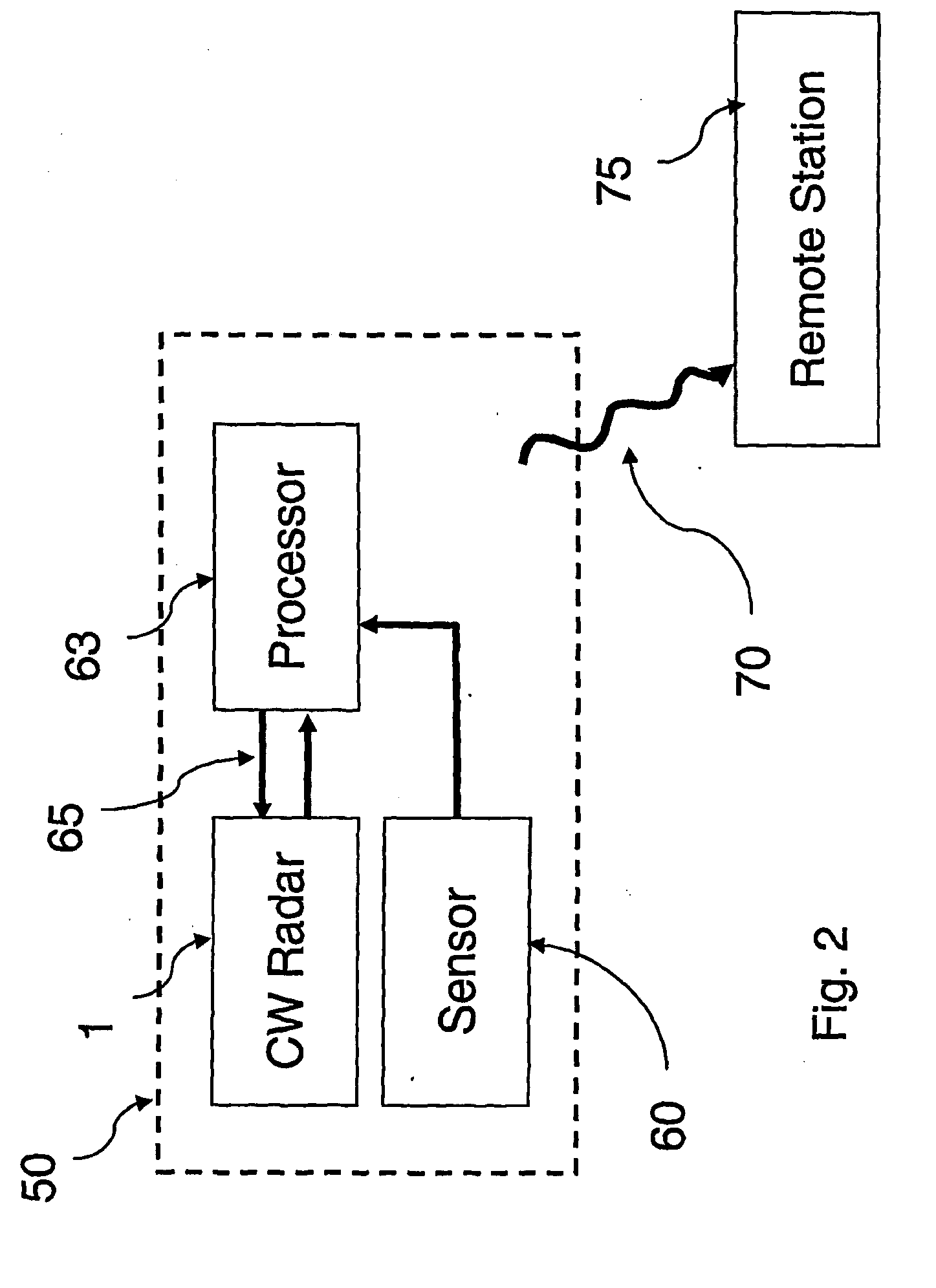Motion Detection Systems Using CW Radar in Combination With Additional Sensors
a technology of motion detection and cw radar, applied in the field of cw radar, can solve the problems of inability to ensure reliable detection, inability to use cw radar sensors alone, and inability to detect moving objects, so as to improve discrimination and classification of moving objects, reduce false alarm rates, and reduce power consumption
- Summary
- Abstract
- Description
- Claims
- Application Information
AI Technical Summary
Benefits of technology
Problems solved by technology
Method used
Image
Examples
Embodiment Construction
[0039]Referring now to FIG. 1, prior art motion detector 1 of the referenced application includes a CW radar 10 consisting of frequency source 12, power divider 14 circulator 16, antenna 18 and mixer 30.
[0040]In one embodiment, antenna 18 is a directional antenna such as a YAGI or flat panel, so as to project a majority of the radar energy in a given direction, to ascertain the presence of a moving object within that beam. In another embodiment, the antenna is omni-directional, so that any moving object that comes into the vicinity is detected.
[0041]In one embodiment, radar 10 is a single frequency radar with frequency source 12 set optimally to 900 MHZ.
[0042]As illustrated, one output of power divider 14 is coupled to circulator 16, which is coupled to antenna 18. The antenna forms CW beam 24, which penetrates wall 20. Signal 26, reflected from moving object 22 behind the wall, is received by antenna 18 and sent to circulator 16. Circulator 16 passes reflected signal 26 to mixer 30...
PUM
 Login to View More
Login to View More Abstract
Description
Claims
Application Information
 Login to View More
Login to View More - R&D
- Intellectual Property
- Life Sciences
- Materials
- Tech Scout
- Unparalleled Data Quality
- Higher Quality Content
- 60% Fewer Hallucinations
Browse by: Latest US Patents, China's latest patents, Technical Efficacy Thesaurus, Application Domain, Technology Topic, Popular Technical Reports.
© 2025 PatSnap. All rights reserved.Legal|Privacy policy|Modern Slavery Act Transparency Statement|Sitemap|About US| Contact US: help@patsnap.com



